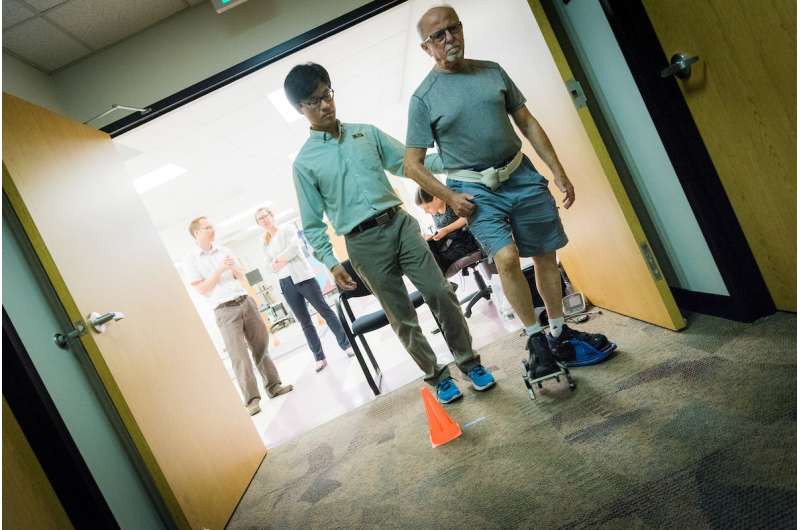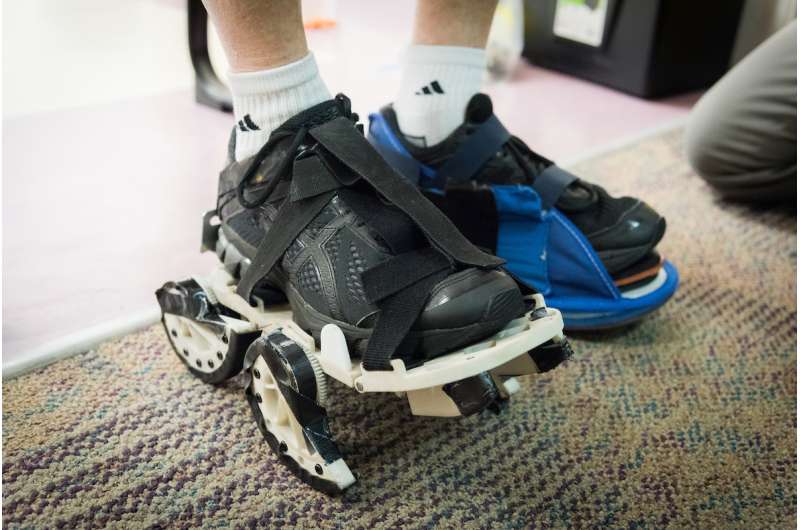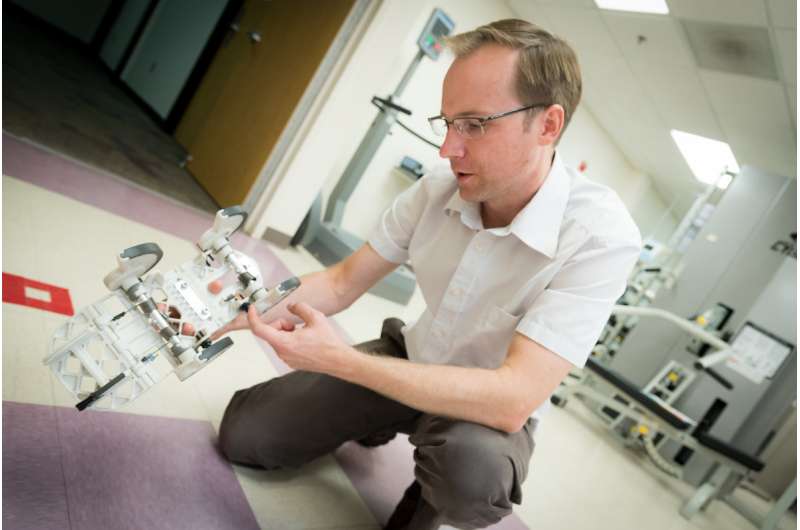Early study shows shoe attachment can help stroke patients improve their gait

A new device created at the University of South Florida – and including a cross-disciplinary team of experts from USF engineering, physical therapy and neurology – is showing early promise for helping correct the signature limp experienced by many stroke survivors.
Called the Gait Enhancing Mobile Shoe (GEMS), the shoe attachment is the result of multidisciplinary work and expertise in USF's engineering, physical therapy, and neurology programs.
In addition to offering stroke patients good outcomes for improving their gait and balance, a preliminary study is showing the shoe also provides several advantages over a current stroke rehabilitation tool – the split-belt treadmill – including lower cost, greater convenience, and mobility.
"This is early in the process but we're seeing the benefits we expected so it's very promising," said Kyle Reed, PhD, associate professor in the Department of Mechanical Engineering in the USF College of Engineering and principal investigator for the preliminary study on GEMS.
"We really want to help people who are limited in their walking ability to improve enough so they can return to the activities of their daily lives. The long-term hope is that this shoe attachment could be less expensive and safe enough that, once trained on how to use it, patients could take the GEMS home for therapy."
Reed developed the GEMS shoe along with Seok Hun Kim, PT, PhD, associate professor in the School of Physical Therapy and Rehabilitation Sciences in the USF Health Morsani College of Medicine and co-principal investigator for the GEMS study. In 2010, Dr. Reed received funding from the National Institutes of Health to conduct a clinical trial of a small group of stroke survivors trying the GEMS; the study is not for severe stroke survivors, but mild to moderate stroke survivors.
The study also includes USF Health stroke expert David Z. Rose, MD, associate professor in the Department of Neurology in the USF Health Morsani College of Medicine, who said he sees the GEMS as a great potential option for stroke patients to improve their mobility.
"Many stroke patients are devastated that their ability to walk on their own can be so limited, even around their own homes," Dr. Rose said. "Early data for the GEMS is very promising and the next phases of study will really help us see its true potential."
Many stroke patients develop an asymmetric gait because of damage to their central nervous system, resulting in difficulty moving their affected leg – they can't extend their foot backward enough, which prevents natural pushing off into the swing phase experienced in an unaffected walk.

Typical stroke rehabilitation to improve gait symmetry involves using a split-belt treadmill that offers two independent belts operating at different speeds to exaggerate the asymmetry of the patient's gait.
But an odd yet natural thing happens when patients leave the treadmill – their brain returns to a fixed-floor state and they regress, with many finding it difficult to recreate the gait correction on solid ground, a regression that is called an after effect.
While generally successful for improving stroke patients' gaits, the split-belt treadmill is expensive, requires a dedicated space to house and a qualified staff to monitor sessions and, because of after effect, can require more time for patients to master the correction, said Seok Hun Kim, PT, PhD, associate professor in the School of Physical Therapy and Rehabilitation Sciences in the USF Health Morsani College of Medicine.
"The GEMS allows movement across any safe surface, thus 'rewiring' the brain to learn the new compensation technique for everyday walking, not just for when they are on the treadmill," Dr. Kim said.

"The GEMS is generally worn on the unaffected side, helping the patient use their affected side to compensate for the irregular footing."
While early results of this preliminary study are showing strong support for a successful approach to improving the gait of stroke patients, more detailed study with more patients will be necessary. Dr. Kim said a full study, one that compares to the current approach with the split-belt treadmill, is critical before clinicians adjust their approach.


















